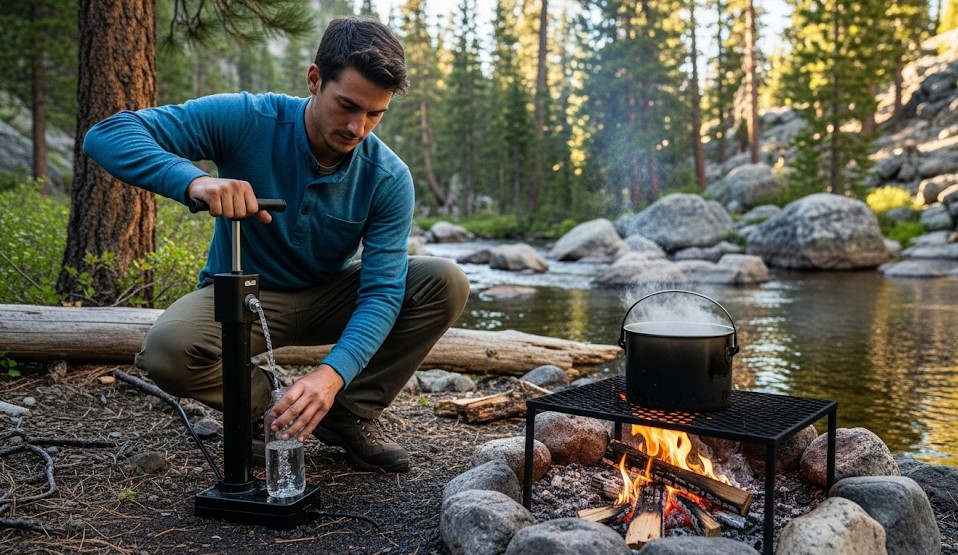How to Purify Water in the Wild
 Click here for WWSWA top choice
Click here for WWSWA top choice
Objective
Produce safe drinking water under field conditions using the fastest effective method for your situation—without re-contaminating it afterwards.
Scenario (Example)
Example: After heavy rain the creek is cloudy and cold. You have a canister stove, a 0.1 μm squeeze filter with backflush syringe, chlorine dioxide tablets, and one 1-liter bottle.
Decision Flow (pick one)
- Clear water + short on fuel: Filter → chemical or UV polish.
- Cloudy/silty: Settle and pre-filter → boil or filter.
- In a hurry: Filter now → drink; treat extra liters while you move.
Method 1 — Boil (gold standard)
- Skim from moving water or draw mid-depth from a lake (avoid bottom sediment).
- Pre-filter through a bandana/coffee filter until visibly clearer.
- Bring to a rolling boil for 1 minute (3 minutes above 6,500 ft).
- Cool with the lid on; do not dip fingers or pour through a dirty cap.
Field note: On a small canister stove, 1 L typically reaches a rolling boil in 4–7 minutes depending on wind and pot shape.
Method 2 — 0.1 μm Squeeze Filter
- Fill the soft bag; keep the mouth just below the surface so you don’t vacuum sediment.
- Thread on the filter and squeeze steadily—don’t crush the fibers with a death-grip.
- Backflush after every 1–2 liters to keep flow high.
- Add a carbon element if taste is poor (optional).
Field note: Expect ~60–90 seconds per liter when clean; slower with silt—backflush sooner.
Method 3 — Chemical (Chlorine Dioxide)
- Pre-filter cloudy water.
- Add per label (tabs/drops). Swirl and crack the cap slightly so threads get contact.
- Wait 30 minutes (60 minutes if water is very cold or turbid).
Method 4 — UV (clear water only)
- Pre-filter until water looks clear.
- Stir with UV pen per instructions, usually 60–90 seconds per liter.
- Protect treated water from light and dirty lids.
Quality Checks
- No visible floaters; odor reduced.
- Contact times met (chemical/UV) or rolling boil achieved.
- Clean threads and cap—most re-contamination happens here.
Real Example
On a muddy Ozarks creek, a team pre-filtered through a T-shirt, then ran a squeeze filter and backflushed every liter. Taste was improved with a carbon element. They bottled 3 L in 15 minutes and moved before dark.
Common Errors
- Using UV on cloudy water (ineffective).
- Touching the bottle mouth with dirty fingers or filter threads.
- Not accounting for altitude on boil times.
10-Minute Drill
Collect 2 liters; treat 1 by boil and 1 by filter. Time both. Note fuel used and clarity difference. Choose the faster method for your terrain on the next outing.
← Previous | All Articles | Next →
